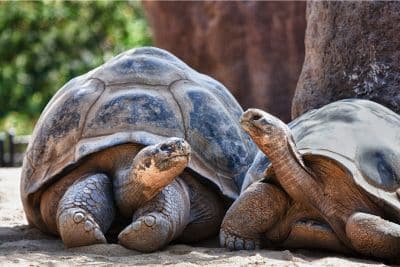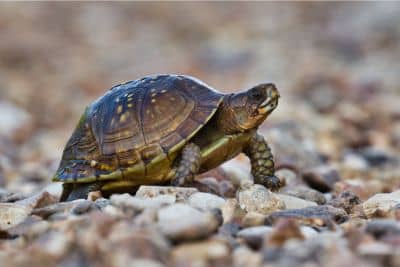The Ibera Greek tortoise (Testudo graeca ibera) is a popular subspecies of the common Greek tortoise. It’s believed that the vast majority of pet Greek tortoises available today belong to this group.
In this article, I’ll introduce you to the subtle differences that make Ibera Greek tortoises distinct from other members of the species. You’ll also learn some basic care guidelines for this popular subspecies.
Overview of the Ibera Greek Tortoise
Another common name for this subspecies is the Asia Minor tortoise, inspired by the fact that Ibera Greek tortoises are found across much of eastern Europe and Asia.
The Ibera Greek tortoise is quite distinct from the rest of the species Testudo graeca. So much so that researchers have argued for its classification as a separate species, which you can read more about through the California Turtle & Tortoise Club. It (alongside the golden Greek tortoises) is the most popular subspecies of Greek tortoise seen within the pet trade today.
This subspecies contains a surprising degree of variation—likely the result of the Ibera Greek tortoise’s vast native distribution—in regards to traits like size and coloring.
Physical Characteristics
Ibera Greek tortoises have the standard domed shell shape seen in Testudo species but can vary in color. The prevailing theory is that darker shelled tortoises originate from the northern parts of their native range. Lighter tortoises come from the southern parts, where the ability to reflect bright sunlight is a valuable survival technique.
Size and Growth
Specimens within this subspecies tend to be the largest of the Greek tortoises. Females can easily reach 10 inches long. Males, meanwhile, tend to average about 6 to 7 inches at maturity.
Average Lifespan
All members of the Greek tortoise species have incredibly long lifespans. A healthy Ibera Greek tortoise may live 100 years or longer in captivity.
Behavior and Temperament
Greek tortoises have a reputation for being quite easy going and even friendly with those they know and trust. In my experience, Ibera Greek tortoises are no exception!
Habitat and Natural Environment
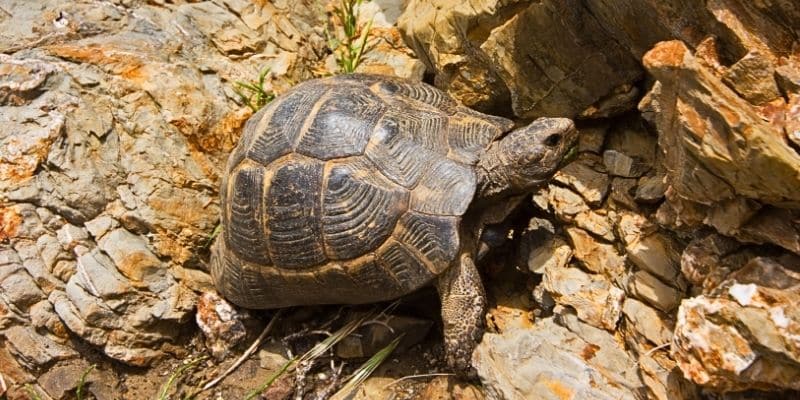
Wild Ibera Greek tortoises are found in dry, sandy areas across Europe, Asia, and North Africa. They prefer open areas with low-lying shrubbery and grasses for convenient grazing. These natural environments are almost exclusively filled with loose sand and rock.
Are You Starving Your Tortoise?
Save 10% on premium tortoise food and supplements from Tortoise Resource Center on Amazon now using code BUYNOWGET10
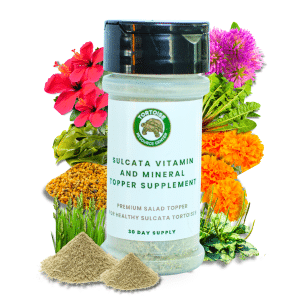
Sulcata Vitamin & Mineral Topper Supplement
30-Day Supply | 2 oz (56 g)
$24.99
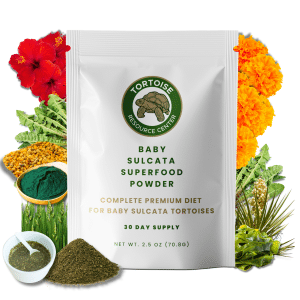
Baby Sulcata Tortoise Superfood Powder
30-Day Supply | 2.5 oz (70.8 g) Bag
$24.99
Dietary Needs
Ibera Greek tortoises have the same dietary requirements as other members of the genus Testudo. These tortoises are avid grazers who can eat a ton of food relative to their size. The key to keeping your tortoise healthy is ensuring its diet contains the right foods.
Wild Diet
In the wild, these tortoises depend on tough plant species that can survive the arid conditions in their natural habitats. Common food sources include grasses, shrubs, and wildflowers.
While these plants are extremely low in calories, they are packed with fiber and a variety of vitamins and minerals. Perhaps the most important of these minerals is calcium, which the plants pull from the soil. Tortoises need plenty of calcium for healthy shell and bone development.
Captive Diet
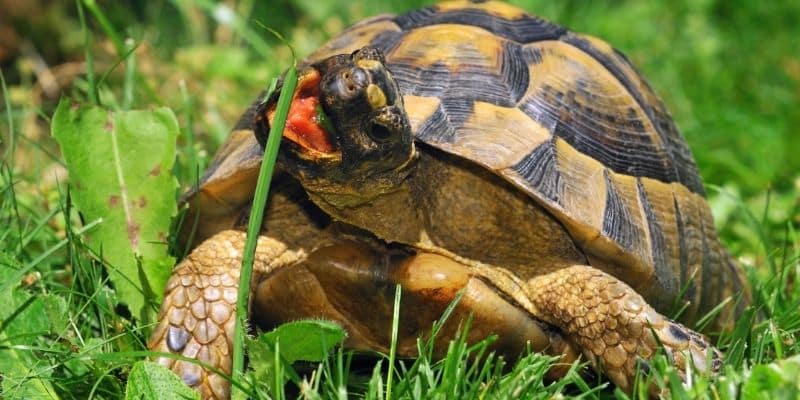
A captive Ibera Greek tortoise should be fed a diet very similar to its wild counterparts. Fresh grasses and hays are an excellent source of fiber and general nutrition.
Leafy greens like dandelions are usually better than store bought produce. However, the latter will also do in a pinch. I recommend foods like mustard greens or collard greens over standard lettuce.
Ibera Greek tortoises don’t need much (or any) protein, fat, or sugar in their diets. Avoid sugary produce like fruit.
Housing Requirements for Captive Ibera Greek Tortoises
Ibera Greek tortoises require a minimum enclosure size of 6 by 3 feet. Traditional tortoise tables work quite well for this subspecies, especially considering their relatively low humidity needs.
In my experience, there’s no meaningful difference in the housing needs of this versus any other subspecies of Greek tortoise. The only thing worth noting is that Ibera Greek tortoises trend on the larger side, so it’s worth investing in as large of an enclosure as possible.
Temperature and Humidity Control
Mature Ibera Greek tortoises can tolerate fairly wide temperature and humidity ranges. Your enclosure should include a basking (or warm) side that ranges from 95 to 105°F and a cool side that ranges from 75 to 85°F. Remember to always measure the temperature at the height of your tortoise’s shell.
The cool side of the enclosure will naturally hold humidity better than the basking zone. Aim for a humidity level of 40 to 60% on this side.
Common Health Concerns
This subspecies is susceptible to all diseases and health issues seen in Greek tortoises and other members of the Testudo genus. I recommend familiarizing yourself with common ailments like vitamin deficiencies, metabolic bone disease (MBD), and shell rot so you can quickly and easily recognize the symptoms and find treatment if necessary.
Citations
California Turtle & Tortoise Club Observations of Testudo (graeca) ibera
Garden State Tortoise Asia Minor Tortoise

